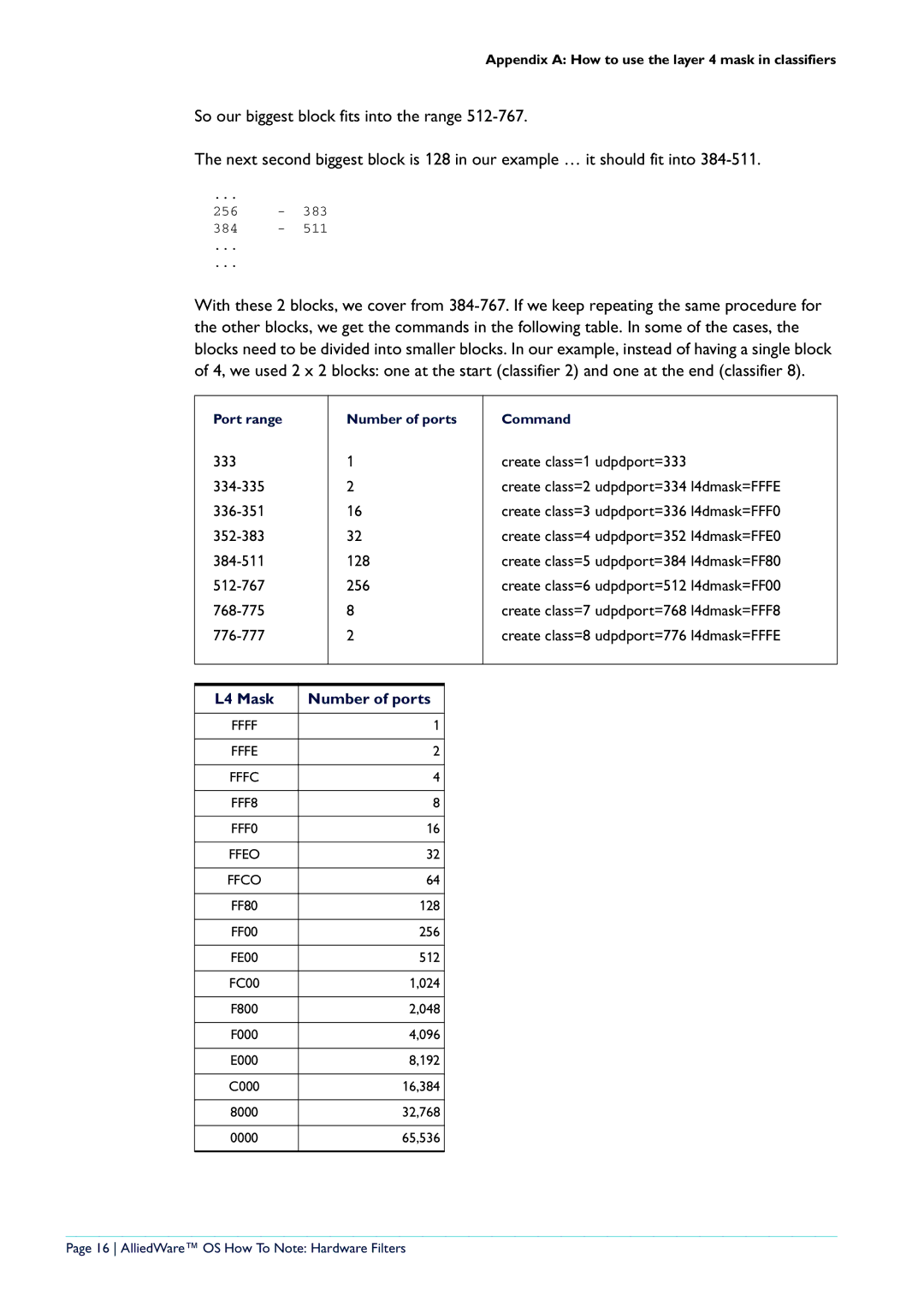Appendix A: How to use the layer 4 mask in classifiers
So our biggest block fits into the range
The next second biggest block is 128 in our example … it should fit into
... |
|
256 | - 383 |
384- 511
...
...
With these 2 blocks, we cover from
Port range |
| Number of ports | Command | |
333 |
| 1 |
| create class=1 udpdport=333 |
| 2 |
| create class=2 udpdport=334 l4dmask=FFFE | |
| 16 |
| create class=3 udpdport=336 l4dmask=FFF0 | |
| 32 |
| create class=4 udpdport=352 l4dmask=FFE0 | |
| 128 |
| create class=5 udpdport=384 l4dmask=FF80 | |
| 256 |
| create class=6 udpdport=512 l4dmask=FF00 | |
| 8 |
| create class=7 udpdport=768 l4dmask=FFF8 | |
| 2 |
| create class=8 udpdport=776 l4dmask=FFFE | |
|
|
|
|
|
|
|
|
| |
L4 Mask | Number of ports |
|
| |
|
|
|
| |
FFFF | 1 |
|
| |
|
|
|
| |
FFFE | 2 |
|
| |
|
|
|
| |
FFFC | 4 |
|
| |
|
|
|
| |
FFF8 | 8 |
|
| |
|
|
|
| |
FFF0 | 16 |
|
| |
|
|
|
| |
FFEO | 32 |
|
| |
|
|
|
| |
FFCO | 64 |
|
| |
|
|
|
| |
FF80 | 128 |
|
| |
|
|
|
| |
FF00 | 256 |
|
| |
|
|
|
| |
FE00 | 512 |
|
| |
|
|
|
| |
FC00 | 1,024 |
|
| |
|
|
|
| |
F800 | 2,048 |
|
| |
|
|
|
| |
F000 | 4,096 |
|
| |
|
|
|
| |
E000 | 8,192 |
|
| |
|
|
|
| |
C000 | 16,384 |
|
| |
|
|
|
| |
8000 | 32,768 |
|
| |
|
|
|
| |
0000 | 65,536 |
|
| |
|
|
|
|
|
Page 16 AlliedWare™ OS How To Note: Hardware Filters
